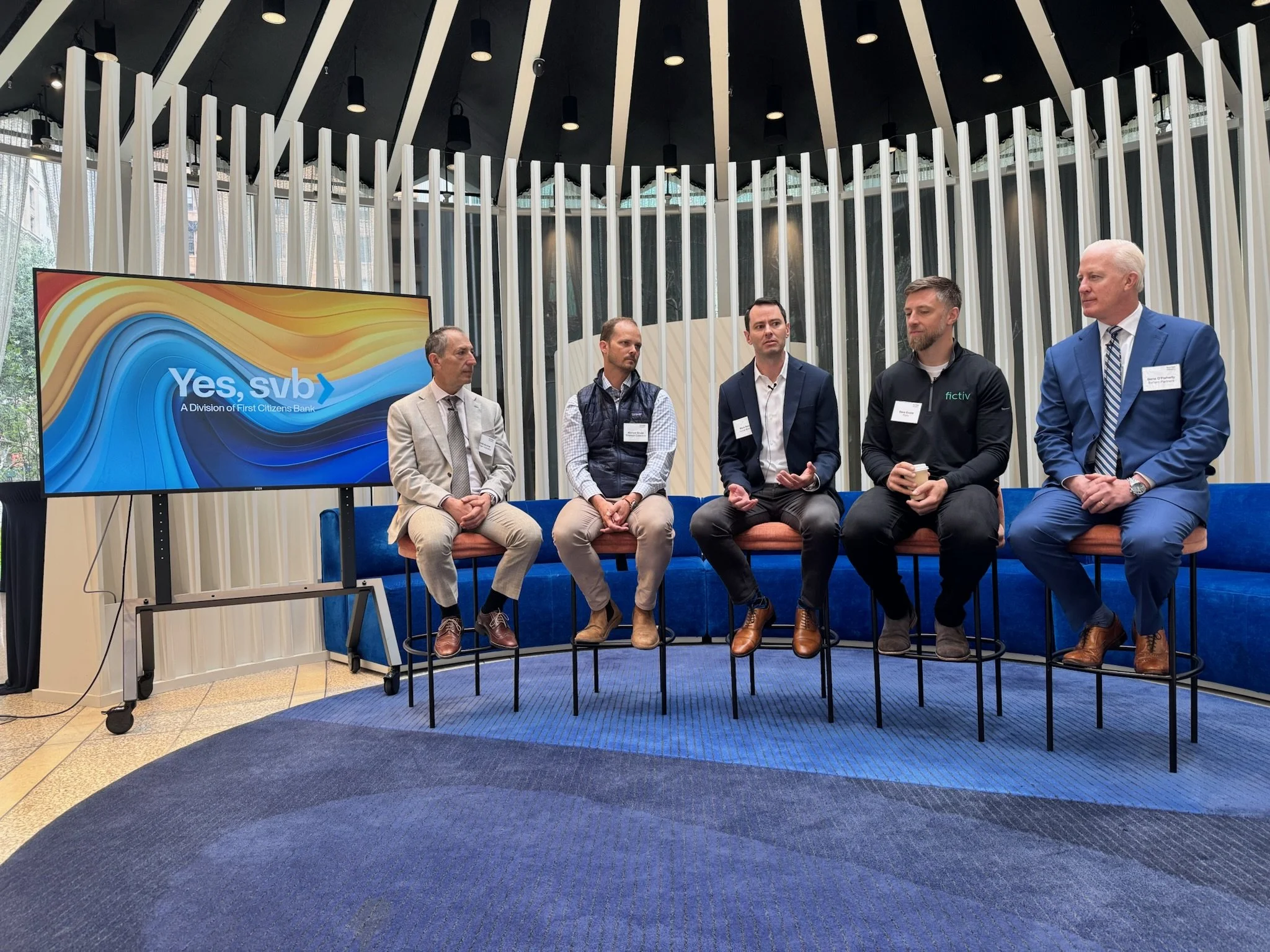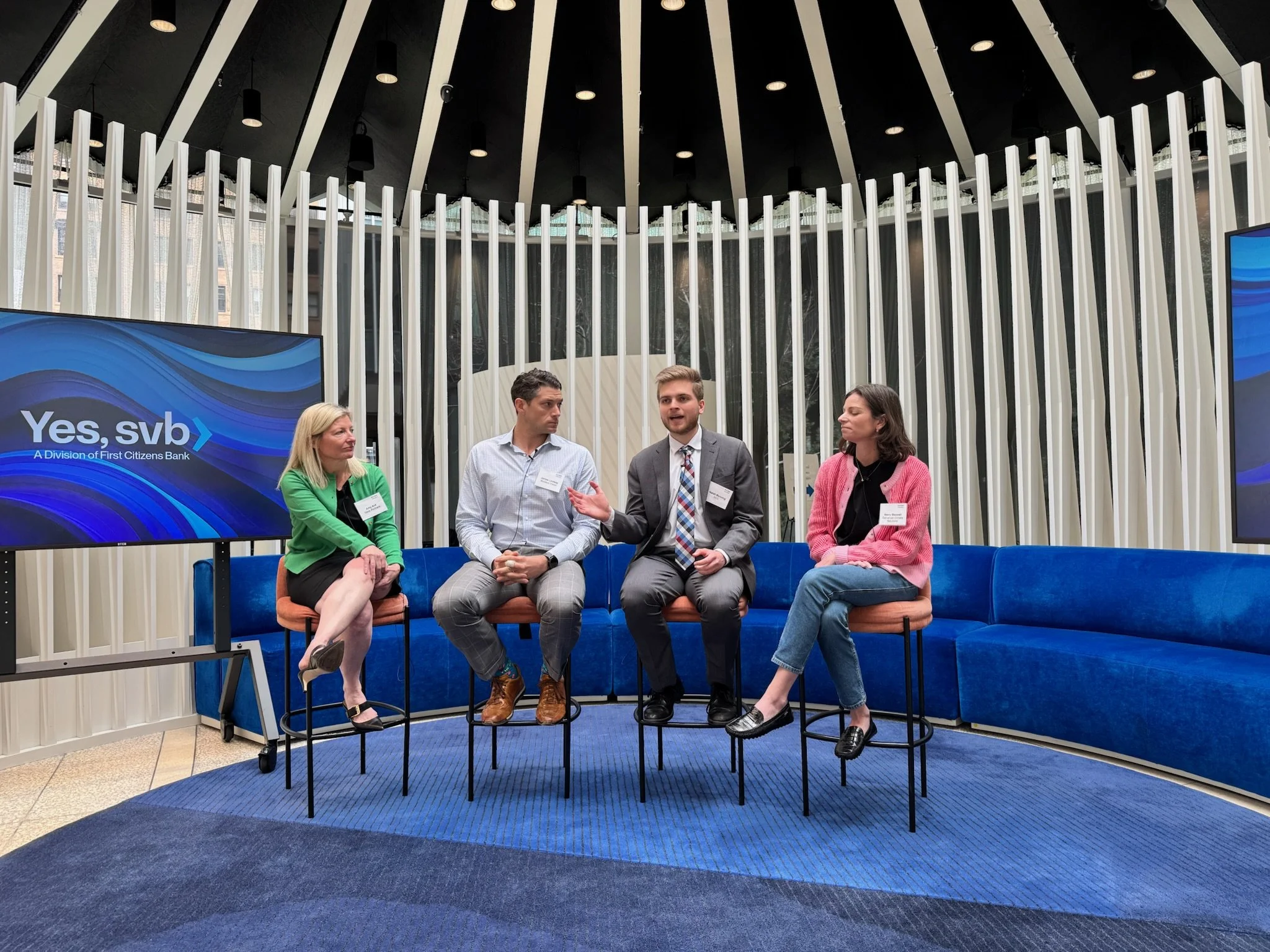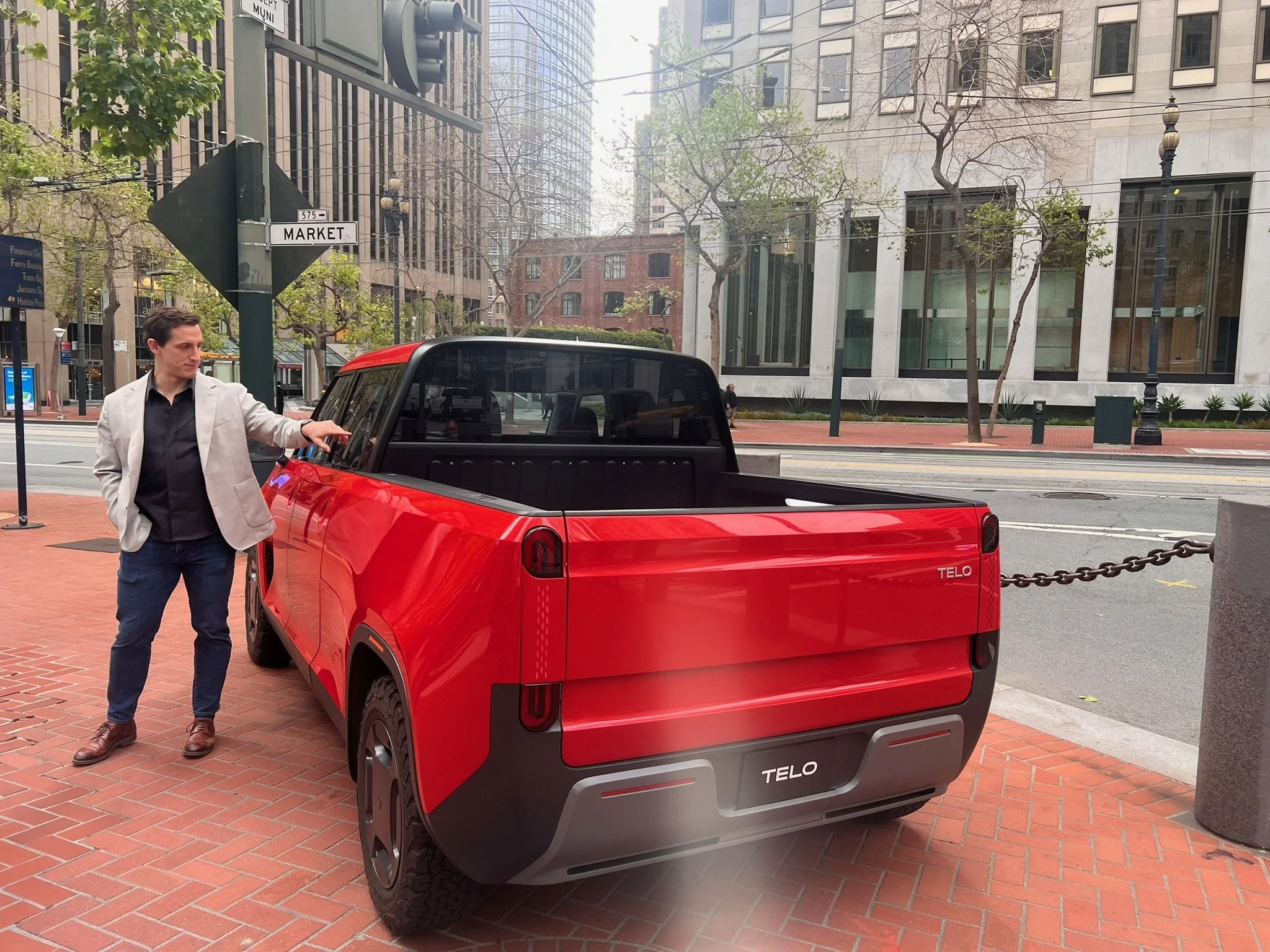Navigating the New Industrial Era Conference: Capital, Policy, and Execution in Uncertain Times
Last week, NextGen Industry convened over 70 builders, investors, and policymakers to address a critical inflection point in American manufacturing. Our private summit Navigating the New Industrial Era asked how industrial startups are navigating the complex conditions of trade and policy uncertainty in an environment of growth capital constraints.
Tariff panel at the SVB Experience Center
We prioritized candid conversations rooted in operator experience—what’s working, what’s not, and what must evolve for U.S. reindustrialization to kick into high gear.
Here are five takeaways from the day’s sessions:
Dual-Use Technologies Are Strategic—But Require Commercial Discipline
Startups working in sectors like maritime, nuclear, and critical minerals are increasingly positioned as national assets—but that status comes with unique expectations. Founders must demonstrate they are “government-capable” without becoming over-reliant on federal support. Panelists emphasized that the most compelling companies are threading the needle between policy relevance and commercial readiness.
“If you’re entirely government-backed, investors start to wonder if you’re building a business—or just running a program.”
Tariff Uncertainty Has Made Supply Chain Strategy Core to the Business
Companies shared firsthand how they’ve had to scramble—halting shipments, reclassifying materials, and changing sourcing strategies midstream in response to shifting tariff regimes. Tariff engineering, country-of-origin restructuring, and "first sale" principles have become critical tools. Investors noted they’re now underwriting supply chain agility as a key risk factor in hard asset deals.
“Your landed cost isn’t a spreadsheet anymore—it’s a chessboard, and the rules keep changing.”
The Missing Middle in Capital Is Still the Hardest Gap to Bridge
The capital stack for industrial tech remains broken between seed-stage VC and billion-dollar infrastructure funds. Founders spoke about the continued struggle to finance $50M–$200M scale-up stages. Emerging instruments—like offtake-backed private debt and project risk insurance—are gaining interest, and partnerships with institutions like MIT are underway to model scalable solutions.
“In biotech, we cracked this 20 years ago. Now it’s time to do the same for industrialization.”
Policy Needs to Evolve from Restriction to Enablement
Panelists discussed the need to update outdated regulatory frameworks that govern nuclear, mining, and refining—sectors critical to U.S. clean energy and industrial strategy. Encouragingly, there’s a growing bipartisan consensus around enabling industrial growth. However, continued industry engagement is essential to ensure policies support, rather than stall, innovation.
“Regulators are shifting from stopping bad actors to enabling good ones—but they need industry at the table to move faster.”
Sites Are Scarce, Not Just Capital
Even well-capitalized companies are struggling to find viable factory locations. The issue isn’t just incentives—it’s the combination of labor, land, permitting, and power access. Participants repeatedly stressed that site selection is no longer a real estate decision—it’s a strategic one that can make or break a company's scale-up journey.
“The incentives are there. The grid isn’t.”
TELO Truck making an appearance at the event outside the SVB Experience Center
While the summit is behind us, the momentum isn’t. NextGen Industry will continue to convene these cross-sector conversations and drive collaborative action.
To stay in the loop, subscribe to our newsletter, join upcoming events, and—most importantly—come talk to us. Tell us what you’re working on and where you’re stuck. We’re building this together.





